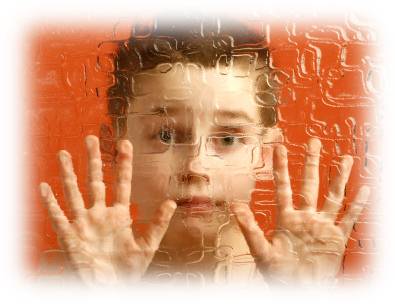Children with autism often cannot understand facial expression
There is much importance put on the ability of the storyteller to be able to make the right faces but it is a common feature of autism spectrum disorders, that children with autism not be able to discern the emotion from facial expressions, finding it hard to distinguish the meaning of a smile from a frown.

Children with autism spectrum disorders may find it difficult to discern intention and instead understand words quite literally.
It is argued that taking the literal meaning of what we say and what we hear and see is done by everyone and that paying attention to what you’re saying (in a literal sense) and indeed what other people say to you is an exercise that you should engage with because you’ll find all sorts of underlying communication.
Children with autism spectrum difficulties typically find linking facial expression, body language and other non-verbal communication to the words they’re hearing. This means that sarcasm or over-exageration can be completely missed leading to misunderstandings, upset and tantrums.
However, some studies have shown that children with autism may show enhanced understanding of your facial expressions, simply by asking your child to pay attention to them, which is a technique you may like to try while narrating your story.
“Providing ASD children with explicit instructions to pay more attention to facial expressions and tone of voice elicited an increased response in the medial prefrontal cortex, part of the brain’s network for understanding the intentions of others. ‘”That’s significant. The fact that you can ‘normalize’ activity in this region in the ASD group by directing their attention to these important social cues clearly indicates there’s nothing intrinsically wrong with this region in the autistic brain,’” said Mirella Dapretto, associate professor of psychiatry and biobehavioral sciences at the Semel Institute for Neuroscience and Human Behavior at UCLA and a member of the UCLA Ahmanson-Lovelace Brain Mapping Center”
Autistic Brains Can Be Trained To Recognize Visual And Vocal Cues,
University of California – Los Angeles.
Clearly, if there’s nothing physically wrong with the linkages, then the normal methods of learning something can be used.
Repetition of stories and themes within stories is key here as it will allow the children to see and hear when and how emotion and body language are tied together. Reading stories with children with Autism again and again can help them learn and to build that link between emotion and body language.
Sometimes they might focus on the words, but after a few repetitions of the book, the story will be familiar so they can then focus on the more subtle aspects such as tone of voice, pitch and of course the non-verbal communications you are giving them through your facial gestures and other body language.
By going over the same emotion in different settings in your story and at different times you are rooting it in their brain for them to pull out as necessary.
Many of the skills of story telling for kids with autism can be found in the free storytelling course on the sign up form to this website. It’s free and may help you and your children get closer and have more fun and effective storytelling.
Some great resources for those looking for help, advice and ideas for kids with autism:
Books
- Books for parents/family
- 1001 Great Ideas for Teaching and Raising Children with Autism or Asperger’s, Revised and Expanded 2nd Edition
- Ten Things Every Child with Autism Wishes You Knew
- for children with siblings with autism:
Websites
- eHow has some good videos and articles on literacy and children with autism
- Some ideas for teachers of children with autism
- A specific story about how a parent and therapist prepared their autistic child for a typhoon using various techniques.
If you have any books or websites you can recommend, please leave them in the comments and I’ll add them to the post
Just fascinating but true and what do some parents go through with their very gifted child!
Yes indeed Yasmin. I have no idea what it would be like and I am in awe of these parents and their kids.